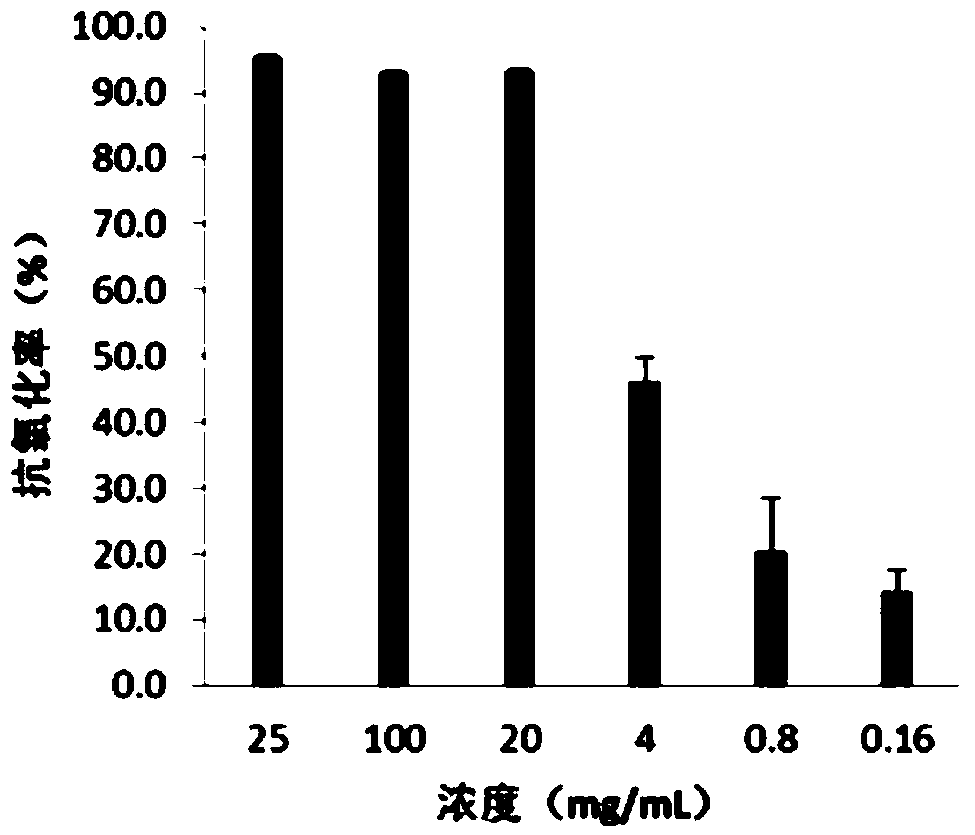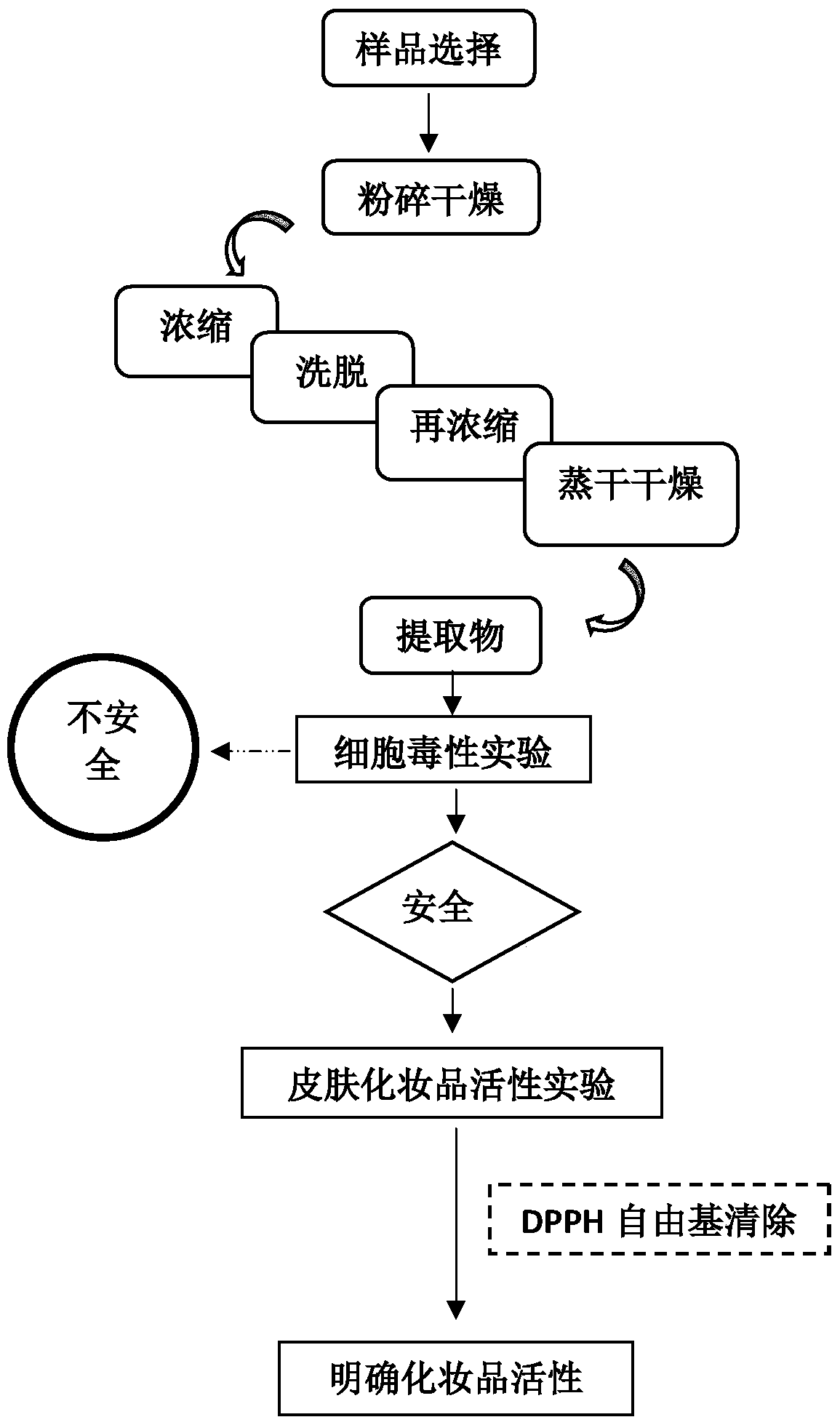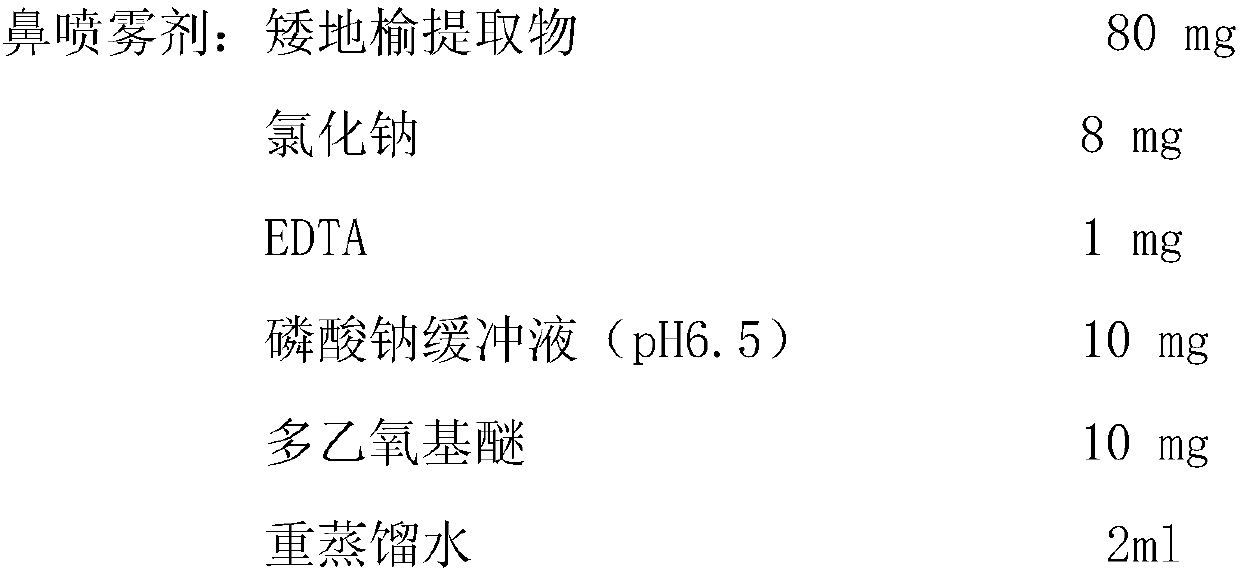Burnet dwarf extract and its application in the preparation of cosmetics
A technology of dwarf burnet and extract, which is applied in the directions of cosmetics, cosmetic preparations, dressing preparations, etc., to achieve the effects of improving resource utilization value, utilization function and added value, and good safety.
- Summary
- Abstract
- Description
- Claims
- Application Information
AI Technical Summary
Problems solved by technology
Method used
Image
Examples
Embodiment 1
[0021] Preparation of Burnet dwarf extract:
[0022] Weigh 12 g of the whole herb sample of Sanguisorba filiformis (Hook.f.) Hand.-Mazz., grind the sample into powder, cold-soak with 25 times the amount of 85% ethanol (361-362mL) for 24h, and then use The filtrate was collected by Buchner funnel and repeated 3 times. The filtrate was distilled under reduced pressure with a rotary evaporator, the filtrate was concentrated, and the concentrated filtrate was dried at low temperature to obtain a crude extract. The crude extract was adsorbed and decolorized by macroporous resin (D101), and eluted with 95% ethanol, the eluate was concentrated, evaporated to dryness, and freeze-dried at low temperature to obtain 3.3 g of Burnet burnet herb extract, with an extraction rate of 27.5%.
[0023] Alternatively, weigh 12 g of the root sample of Sanguisorba filiformis (Hook.f.) Hand.-Mazz., grind the sample into powder, cold soak with 20 times the amount of 95% ethanol for 20 hours, and the...
Embodiment 2
[0025] Cytotoxicity test of Burnet dwarf extract: Determination of CC of samples by MTS colorimetry 50 (50%cytotoxicconcentration), that is, the drug concentration when producing toxicity to 50% of the cells, thereby determining the safe sample concentration for the following activity experiments.
[0026] Experimental method: on a 96-well cell culture plate, mix B16 cells with different concentrations of the drug solution to be tested, set 3 replicate wells, and set a blank control without drug at the same time, 37 ° C, 5% CO 2 After culturing for 24 hours, the cytotoxicity was detected by the MTS colorimetric method, and the OD value was measured by a microplate reader at a wavelength of 490 nm. Calculated to get CC 50 value.
[0027] Cell survival rate (%) = experimental well OD 490nm / blank well OD 490nm ×100%
[0028] Experimental results: the cell survival rate of the whole herb extract of Burnet burnet is 87.343%, which belongs to the normal level. It can be clearl...
Embodiment 3
[0030] DPPH free radical scavenging experiment: mix the whole herb or root extract of the drug to be tested with DPPH (final concentration: 100 μM), set up 3 repeated wells, and set up a blank control without drug and a positive control of Trolox at the same time, 30°C, 1h, measure the OD value with a microplate reader, and the detection wavelength is 515nm. Calculate the antioxidant rate.
[0031] Antioxidant rate (%) = (1‐experimental hole OD 515nm / blank well OD 515nm )×100%
[0032] Experimental results: In the experiment, the whole plant or root extract of Burnet burnet exhibited significant DPPH free radical scavenging ability, and according to the concentration gradient, it showed a good dose-effect relationship (see figure 1 ), can be used as a good natural plant source of cosmetic activity with anti-wrinkle or sunscreen potential.
[0033] The present invention provides topical compositions having natural botanical ingredients or mixtures of natural botanical ingr...
PUM
 Login to View More
Login to View More Abstract
Description
Claims
Application Information
 Login to View More
Login to View More - R&D
- Intellectual Property
- Life Sciences
- Materials
- Tech Scout
- Unparalleled Data Quality
- Higher Quality Content
- 60% Fewer Hallucinations
Browse by: Latest US Patents, China's latest patents, Technical Efficacy Thesaurus, Application Domain, Technology Topic, Popular Technical Reports.
© 2025 PatSnap. All rights reserved.Legal|Privacy policy|Modern Slavery Act Transparency Statement|Sitemap|About US| Contact US: help@patsnap.com



